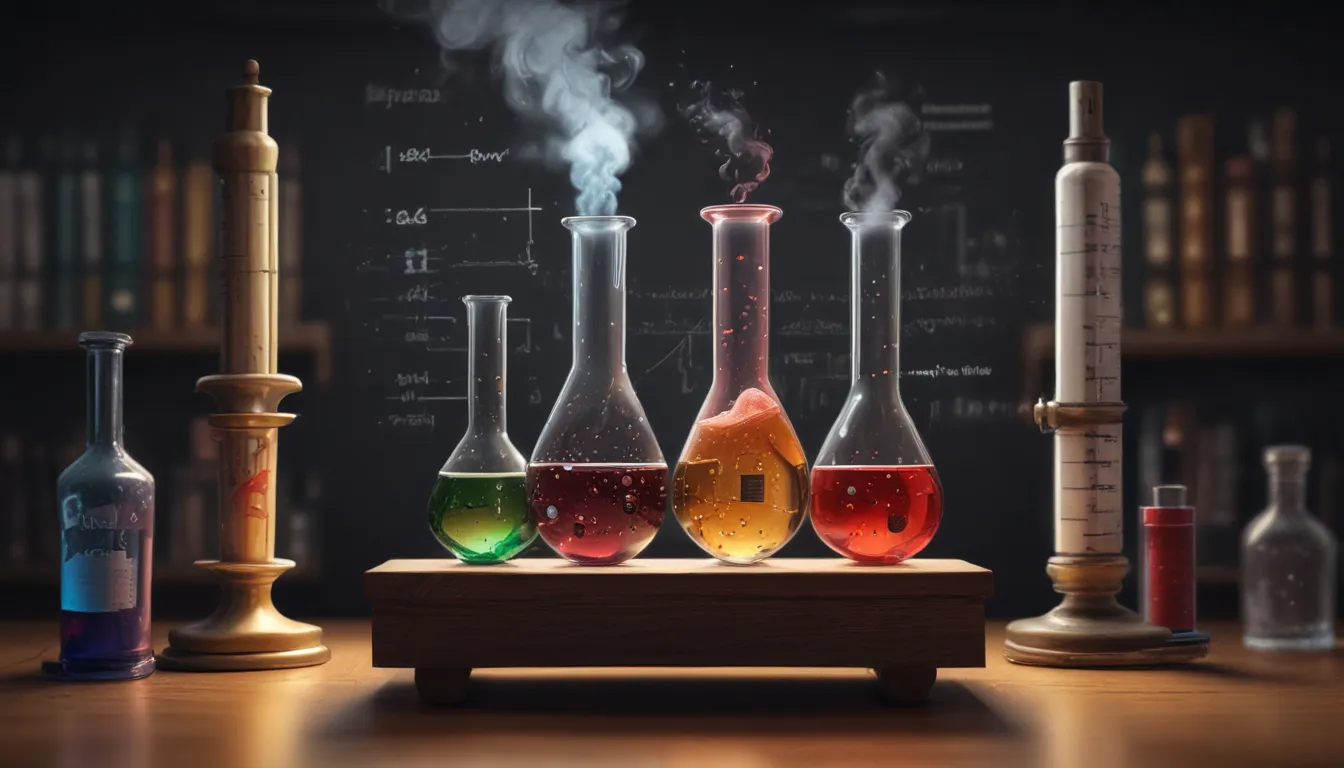A Note About Images: The images used in our articles are for illustration purposes only and may not exactly match the content. They are meant to engage readers, but the text should be relied upon for accurate information.
Chemistry enthusiasts, brace yourselves for an exhilarating journey into the enchanting realm of the equivalence point! This fundamental concept in chemistry holds the key to unlocking the mysteries of chemical reactions and titrations. Delve deep into the world of chemistry as we unravel 19 captivating facts about the equivalence point, shedding light on its significance, applications, and unique properties.
Understanding the Equivalence Point: A Magical Moment in Chemistry
- The equivalence point represents the perfect balance in a chemical reaction, where all reactants have been transformed into products, akin to reaching equilibrium on a seesaw.
- Scientists utilize the equivalence point to determine the concentration of unknown substances, acting as chemistry detectives solving the enigma of molar mass.
Decoding the Significance of the Equivalence Point
The equivalence point plays a vital role in chemical titrations, where the reactant added equals the reactant consumed, leading to complete conversion of reactants to products.
Discovering Indicators and Equivalence Point in Titrations
- Indicators like phenolphthalein and bromothymol blue signal the color change at the equivalence point.
- The equivalence point’s determination hinges on the balanced chemical equation, dictating the ratio of reactants and products.
Exploring the Versatility of Equivalence Point in Chemical Reactions
- The pH at the equivalence point fluctuates depending on the nature of the reaction, with acid-base titrations hovering around 7 for neutralization reactions.
- Different types of titrations entail diverse equivalence points, offering various pH values and outcomes based on the reaction type.
Unveiling Techniques to Determine the Equivalence Point
- Graphical representations like titration curves aid in pinpointing the equivalence point visually.
- Analytical and visual methods enable the identification of the equivalence point through electrical conductivity or color changes in indicators.
Embracing the Equivalence Point as a Stoichiometric Marvel
- Termed as the stoichiometric point, the equivalence point underscores the balanced ratio of reactants and products.
- Preliminary calculations assist in estimating the equivalence point before the titration, enhancing precision in experimental procedures.
Unraveling the Mysteries of Equivalence Point in Analytical Chemistry
- Understanding the equivalence point offers insights into unknown substances’ concentration, molar mass determination, and identification of chemical species.
- Through comprehensive knowledge of the equivalence point, researchers predict reaction kinetics and calculate concentrations efficiently.
Navigating through the Equivalence Factor and Determining Endpoints
- The equivalence factor delineates the moles of a substance reacting with one mole of the titrant.
- Endpoints in titrations signify the completion of reactions, often marked by observable color changes or other indicators.
Delving Deeper into the Exciting World of Equivalence Point
- The pH meter serves as a precise tool to determine the pH at the equivalence point accurately.
- The location of the equivalence point on a titration curve varies based on the acid and base strength, influencing the overall curve shape.
Unveiling the Fascinating FAQs about Equivalence Point
Q: What is the equivalence point in chemistry?
A: The equivalence point indicates the balanced ratio of reactants and products in a chemical reaction, denoting completion.
Q: How is the equivalence point determined?
A: Various methods like titrations, pH measurements, and visual indicators aid in pinpointing the equivalence point accurately.
Q: What is the importance of the equivalence point?
A: The equivalence point provides crucial information on substance concentration, reaction kinetics, and predictive analysis of reactions.
Q: Can the equivalence point be exceeded?
A: In certain cases, exceeding the equivalence point occurs if excess reactants are present, impacting product quantity.
Q: Are all chemical reactions guaranteed to reach an equivalence point?
A: Not all reactions reach an equivalence point due to factors like limited reactants or competing reactions.
Q: Can external factors influence the equivalence point?
A: External factors like temperature, pressure, or catalyst presence can influence the equivalence point, affecting reaction rate and product formation.
Embarking on an Exciting Chemistry Adventure
As you embark on your chemistry journey, mastering the equivalence point is just the commencement of a thrilling exploration. Dive into the captivating world of titration curves, uncovering the underlying meaning and interpretation behind these intriguing graphs. Elevate your understanding of chemistry, impress your peers, and excel in your academic pursuits with our enriching insights into the mesmerizing realm of chemistry.
Conclusion
In essence, the equivalence point serves as a cornerstone in chemistry, offering profound insights into chemical reactions and analytical methodologies. By comprehending the nuances of the equivalence point, researchers unravel the complexities of reactions, calculate concentrations accurately, and predict reaction outcomes with precision. Embrace the allure of the equivalence point, and delve deeper into the captivating world of chemistry to enrich your knowledge and expertise in this fascinating field.
Embrace the Enrichment of Equivalence Point
Equip yourself with a wealth of knowledge on the equivalence point to elevate your understanding of chemical reactions, titrations, and analytical techniques. Dive into the realm of chemistry with confidence, exploring the intricacies of reactions to unravel the mysteries of the scientific world. Immerse yourself in the captivating world of the equivalence point and witness the magic of chemistry unfold before your eyes.
Was this page helpful?
We are dedicated to delivering authentic and engaging content that enriches your learning experience. Each fact on our platform is contributed by real users like you, ensuring a diverse range of insights and information. Our meticulous editorial process guarantees the highest standards of accuracy and reliability, providing you with credible and fascinating facts in the realm of science. Trust in our commitment to quality and authenticity as we empower you to explore, learn, and grow with us.






